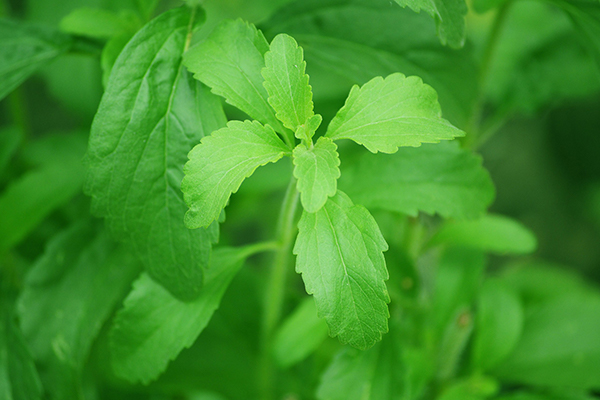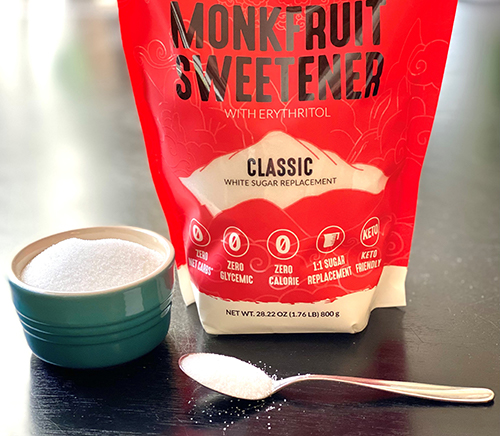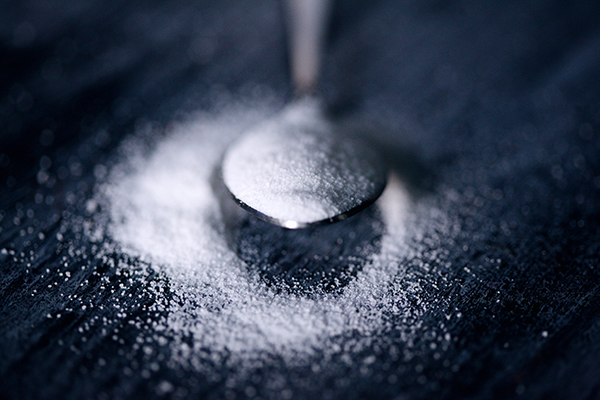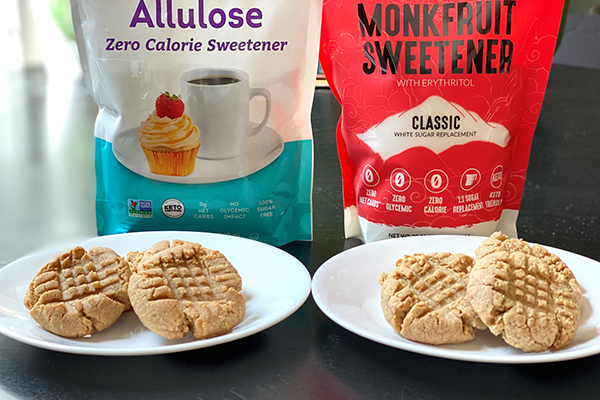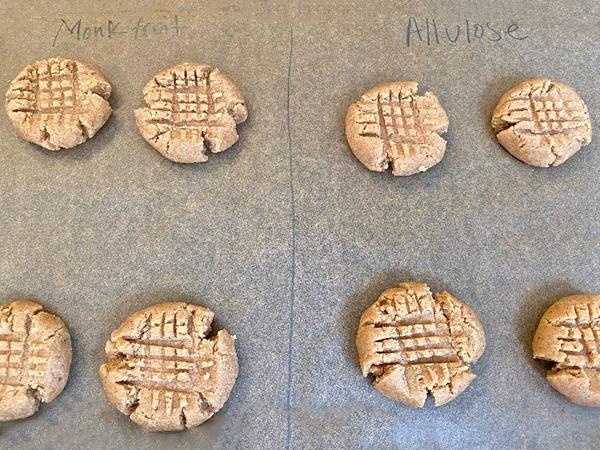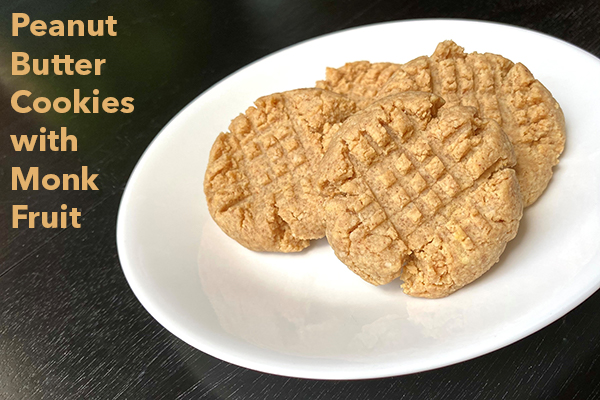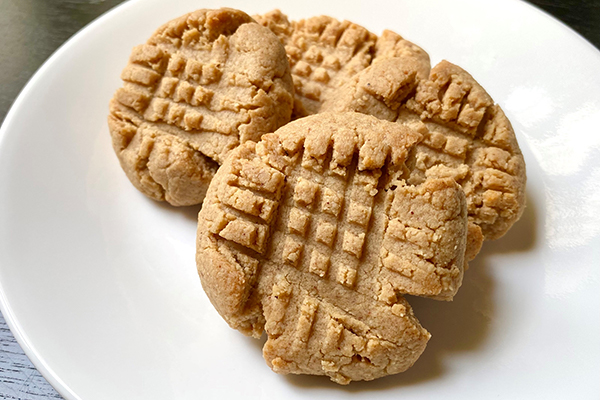As a species, our bodies are hard wired to love sweet! This came in handy back when we were roaming the earth trying to stay alive and figuring out what we could eat. Sweet usually meant safe, but unless you came upon a beehive full of honey or found some ripe fruit, sweet is hard to come by out in nature.
Fast forward about 12,000 years and now sugar is everywhere and in most of the foods we find in our grocery stores. Even naturally sweet foods like fruit have been bred to be bigger and sweeter. That hard wiring is now making us sick. Research links excess added sugar to increased risk of cancer, diabetes, heart disease, dementia and many other issues.
Food manufactures are constantly trying to come up with the next best “no-calorie” sweetener, because they know it will sell. I’ve written about artificial sweeteners in the past, and now wanted to address the “natural” no-calorie sweeteners since they are becoming so popular.
Are natural no-calorie sweeteners safe? Get the scoop on the news on natural no-calorie #sweeteners. #saslife Click To TweetCurrently, the most popular no-calorie natural sweeteners are stevia, erythritol, and monk fruit with allulose hot on their heels. A few of these natural sweeteners have been used for thousands of years, in their natural form, but that isn’t what we are buying on the shelves. Don’t let the marketing of these products fool you, it takes a lot of processing to turn an herb or fruit into a white powder!
Stevia
Stevia is an herb native to South America and has been used medicinally and as a sweetener for over a thousand years. Most of what you find in the store is not exactly the same though. The “stevia” that is in most products is actually Reb A (rebaudioside A), a chemical extract from the stevia plant. You can find whole leaf stevia products, they are just usually in the supplement section since they aren’t FDA approved for use in food. The whole leaf extracts do tend to have an aftertaste, most described as somewhat licorice like. Manufacturers set out to develop a “pure” extract that does not have this aftertaste, which is where Reb A comes in. There are also other stevia extracts, called glycosides, but Reb A is the most popular due to its flavor profile.
Make sure to read ingredients in stevia products so that you know what you are getting; many will have additional fillers and/or sweeteners like dextrose, maltodextrin or erythritol. Some stevia extracts are processed with solvents like hexane or chloroform hexane and some are “water extracted.” There is typically no mention of this on the labels of most products. You can also make your own liquid extract.
Possible Pros
- May reduce glucose levels and improve insulin sensitivity
- May reduce blood pressure in those with hypertension
- Has antioxidant, antiviral and antimicrobial properties
- Appears to be safe in moderate doses
Possible Cons
- Might alter the gut microbiome
- No long-term data on safety
Monk Fruit
Monk fruit, or Luo han guo, is a small green fruit native to parts of China and Thailand. It has been used as a sweetener in China for thousands of years. It is also used medicinally for sore throats and cough. The flesh of the fruit was typically dried then added to teas, soups, and broths.
Minimally processed monk fruit powders are typically brown and can have a caramel-like aftertaste. Most products you find in the store are processed further with solvents to take out this aftertaste and is generally a white powder mixed with other sweeteners or fillers like dextrose or erythritol. There are also liquid products, some of which don’t contain other sweeteners, like this. Monk fruit itself doesn’t typically cause any gastrointestinal issues and currently it appears to not negatively impact the gut microbiome.
Possible Pros
- May have anti-inflammatory, antioxidant, and antibacterial properties
- May reduce glucose levels and improve insulin sensitivity
- Appears to be safe in moderate doses
Possible Cons
- Limited overall research, most are animal based (mice and rats, not humans)
- No long-term data on safety
Erythritol
Erythritol is a sugar alcohol that is naturally found in very small amounts in foods like grapes, peaches, mushrooms and some fermented foods. The sweetener erythritol is manufactured by fermenting corn with a certain strain of yeast. Erythritol is likely the most common sugar alcohol you will find as an “added” sweetener, or one that you can buy on its own. Other less common sugar alcohols include mannitol, sorbitol, xylitol, lactitol, isomalt and maltitol.
Sugar alcohols are not totally digested, which is why consuming too much can lead to gastrointestinal symptoms like gas, bloating and diarrhea, even in healthy people. Erythritol is the least likely of the sugar alcohols to cause these symptoms, but it can still happen. Based on the current research, erythritol doesn’t seem to have a negative impact on the gut microbiome.
Possible Pros
- May prevent dental plaque buildup and cavities
- May have antioxidant properties
- May improve endothelial function in those with Type 2 Diabetes
- Appears to be safe in moderate doses
Possible Cons
- Has a “cooling” sensation that might be unpleasant for some
- Often made from GMO corn
- May cause gas, bloating and diarrhea
- No long-term data on safety
Allulose - The New Kid on the Block
Allulose is not one of the top 3 most popular natural no-calorie sweeteners, but it is a new “up and coming” sweetener. Also known as D-psicose, allulose is naturally occurring in small amounts in foods like figs, raisins and wheat. Commercially it’s produced using enzymes to convert the fructose from corn (mostly) to allulose. Allulose is said to taste more like sugar with little to no aftertaste, so manufacturers are hoping it will become very popular. Unlike some of the other sweeteners, it is not fermented in the gut, which means that issues like gas and bloating are not as much as a concern with allulose in moderate doses. However, large doses may cause diarrhea, abdominal pain and nausea.
Possible Pros
Possible Cons
- No studies on the effects on the gut microbiome
- No long-term data on safety
The Bottom Line
The bottom line with any sweetener, I believe, is to enjoy it in moderation. Regardless of if the sweetener used is natural, not natural, contains calories, or is “no-calorie,” it still can perpetuate the sweet cravings. Of course, we are all different, and this doesn’t happen with everyone. If using these sweeteners instead of sugar helps you to reduce your glucose levels or reach other goals, then that is wonderful. If you find however, that you are having sweet beverages and foods all day long (because they are sugar-free), then you may want to rethink things. Having an overall healthy and balanced diet with sweets occasionally is ideal.
Recipe Testing
I had never baked with any of these sweeteners before, so I thought I would do a comparison. I chose almond flour based peanut butter cookies since they are simple and have few ingredients. Plus, the recipe only makes 8 cookies, so if I didn’t like it, it wasn’t a huge loss. I compared a monk fruit/erythritol blend with allulose.
I used the same amount of both sweeteners, and the same amount of the other ingredients as well and baked them for the same amount of time (see recipe below).
The Results:
- The allulose cookies were not very sweet and they were a little crumbly.
- The monk fruit/erythritol cookies were sweet. You could feel the “cooling” sensation of the erythritol, but it wasn’t too overpowering. The consistency of the cookie was very good.
- It is recommended that you replace 1 cup sugar with 1 ⅓ cup allulose since allulose is not as sweet as sugar. Since I wasn’t sure if the recipe was going to be too sweet or not, I decided to keep the amount the same. I made this recipe again, and I used 4 Tbsp (or ¼ cup) of allulose, then increased the milk to 2 Tablespoons. This worked out well, the cookies were sweet, and no aftertaste or “cooling” sensation like I got with the erythritol.
- I was also curious about the nutrition facts, since these cookies were basically just nuts. I plugged it into the recipe creator (using the monk fruit blend) on the LoseIt app and 1 cookie = 155 calories, 12.6 g fat, 5.1 g carbs, 5.5g protein, 2g fiber.
Peanut Butter Cookies with Monk Fruit
Makes 8 cookies
Recipe from Chocolate Covered Katie
PRINT RECIPE
Ingredients
½ cup peanut butter, or nut butter of choice
1 tbsp milk of choice (I used MALK almond milk)
⅔ cup finely ground almond flour
3 Tbsp powdered monk fruit/erythritol blend
⅛ tsp salt
⅛ tsp baking soda
Directions
- Pre-heat the oven to 325ºF.
- If not already easily stir-able, gently heat nut butter until runny.
- Stir dry ingredients very well.
- Stir in nut butter and milk to form a dough.
- Roll into 8 balls and place on a parchment paper linked baking sheet, then flatten into thick cookies.
- Place cookies on the center rack of the oven and bake for 10 minutes.
- Take out when still undercooked.
- Let cool completely, they firm up as they cool.

